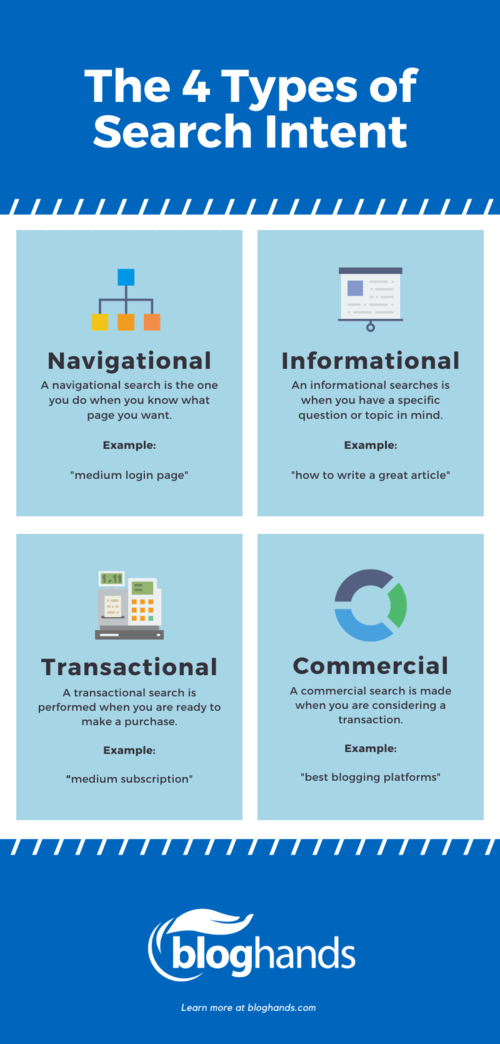BJ255 Insights
Exploring the latest trends and news in various fields.
Cracking the Code of Search Intent
Unlock the secrets of search intent and boost your traffic! Discover how to align content with what users truly crave.
Understanding Search Intent: The Key to Effective SEO
Understanding Search Intent is crucial for creating effective SEO strategies. Search intent refers to the reason behind a user's query; it explains what the user is looking for when they type a specific keyword into a search engine. There are generally four types of search intent: informational, navigational, commercial, and transactional. By identifying the type of intent behind a query, content creators can tailor their articles, products, or services to meet those specific needs, enhancing the user experience and increasing the likelihood of conversions.
To optimize for search intent, it's essential to perform thorough keyword research and analyze search engine results pages (SERPs) for the keywords you're targeting. Look at the top-ranking pages and evaluate the content types, keywords, and structures they utilize. Additionally, consider implementing various content formats such as blog posts, videos, and infographics to address diverse user needs. By aligning your content strategy with the search intent, you will improve your site's visibility and drive more organic traffic, ultimately achieving better SEO performance.

How to Analyze and Optimize for Different Types of Search Intent
Understanding and addressing search intent is crucial for effective SEO. There are generally four main types of search intent: informational, navigational, transactional, and commercial investigation. To analyze search intent, start by identifying the keywords your audience is using through keyword research tools. For example, if people are searching for 'how to train a puppy,' this indicates an informational intent. By categorizing your keywords, you can tailor your content to directly meet the needs of users based on their search behavior.
Once you have categorized the search intent, it's time to optimize your content accordingly. Use on-page SEO techniques such as using relevant headings, meta descriptions, and structured data that align with the identified intent. For instance, for a transactional search intent, ensure that your content features strong calls-to-action (CTAs) and is rich in product information. Additionally, consider utilizing user-generated content and testimonials to enhance the credibility of your offerings and cater to potential buyers thoroughly.
What Are the Common Types of Search Intent and Why Do They Matter?
Search intent, often referred to as user intent, is the primary goal a user has when entering a query into a search engine. Understanding the different types of search intent is crucial for creating content that satisfies user queries and improves SEO performance. Generally, search intent can be categorized into four main types: informational, navigational, transactional, and commercial investigation. Each of these categories represents a distinct user need, and recognizing them helps content creators tailor their articles and strategies effectively.
The significance of identifying these intent types cannot be overstated. For instance, informational intent indicates that users are seeking knowledge, while transactional intent suggests they are close to making a purchase decision. By aligning your content with the specific type of search intent, you not only enhance user experience but also improve your chances of ranking higher in search engine results. Prioritizing user intent in your SEO strategy ensures that you connect with your audience in a meaningful way, ultimately leading to increased traffic and conversions.